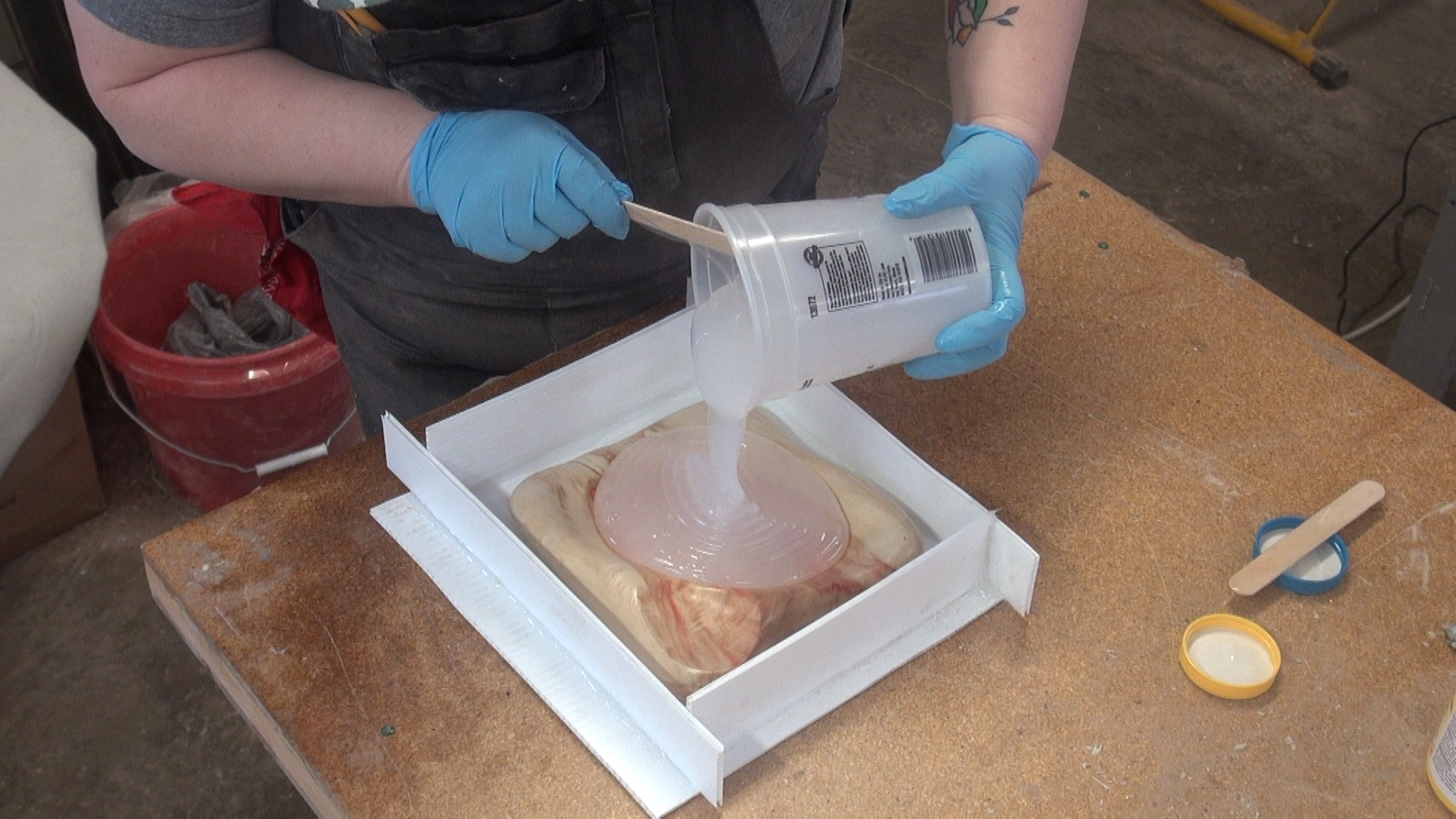
INTRODUCTION TO ENGINEERING DESIGN (EGDT 1040) | UVU CONCURRENT ENROLLMENT - FULL YEAR
- SUGGESTED GRADES: 10-12
- 1 Credit HS (A88180C)
- 3 Credits CE
Students learn to use engineering 2D and 3D computer-aided software to design, build and take home several projects using 3D printing and laser engraving technologies. The projects include:
- 3-D Printed pinewood derby cars.
- Motorized model airplanes.
- Fidget toys and knick-knacks.
- Mechanical crank toys.
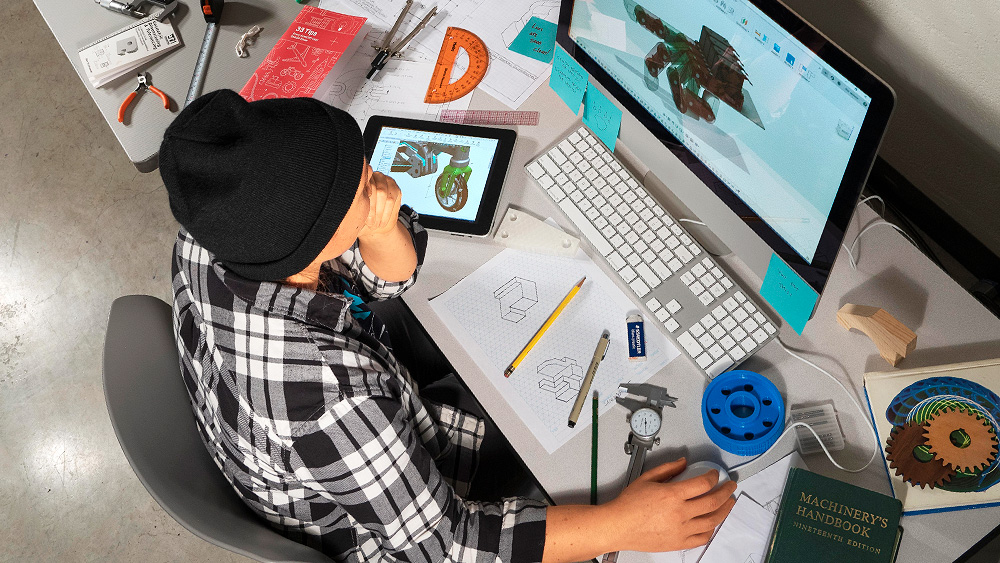
ADVANCED ENGINEERING DESIGN (EGDT 1070) | UVU Concurrent enrollment - Full Year
- SUGGESTED GRADES: 11-12
- 1 Credit HS. (A86672C)
- 3 Credits CE
- PreReq: Intro to Engineering Design
Building on skills learned in Introduction to Engineering Design, students learn to use engineering 2D and 3D computer-aided software to design, build, and take home several projects using 3D printing and laser engraving technologies. These projects include:
- Remote control (RC) car design.
- Trophy design competition.
- Functioning desk lamp.
- Industry certificate.
ENGINEERING PRINCIPLES 1 | HIGH SCHOOL COURSE - Fall SEMESTER (TAKEN WITH ENG. PRINCIPLES 2)
- SUGGESTED GRADES: 11-12
- .5 Credit HS. (A86332)
- PreReq: Intro to Engineering
The first in a sequence of “hands-on” courses that tie observations and concepts common to a variety of different engineering disciplines in order to develop a better understanding of basic math and science principles used in engineering. Students will design, build, and test solutions for design problems in each field. These include:
- Mechanical Engineering: Trebuchets, catapults, and ballistas (Angry Birds in Real Life).
- Civil Engineering: Building water towers and busting bridge trusses.
- Chemical Engineering: Mass producing the perfect pancakes.
- Computer Engineering: Create your own video game.
- Electrical Engineering: Wiring a useless box.
- Material Science: Bullet-proof material.
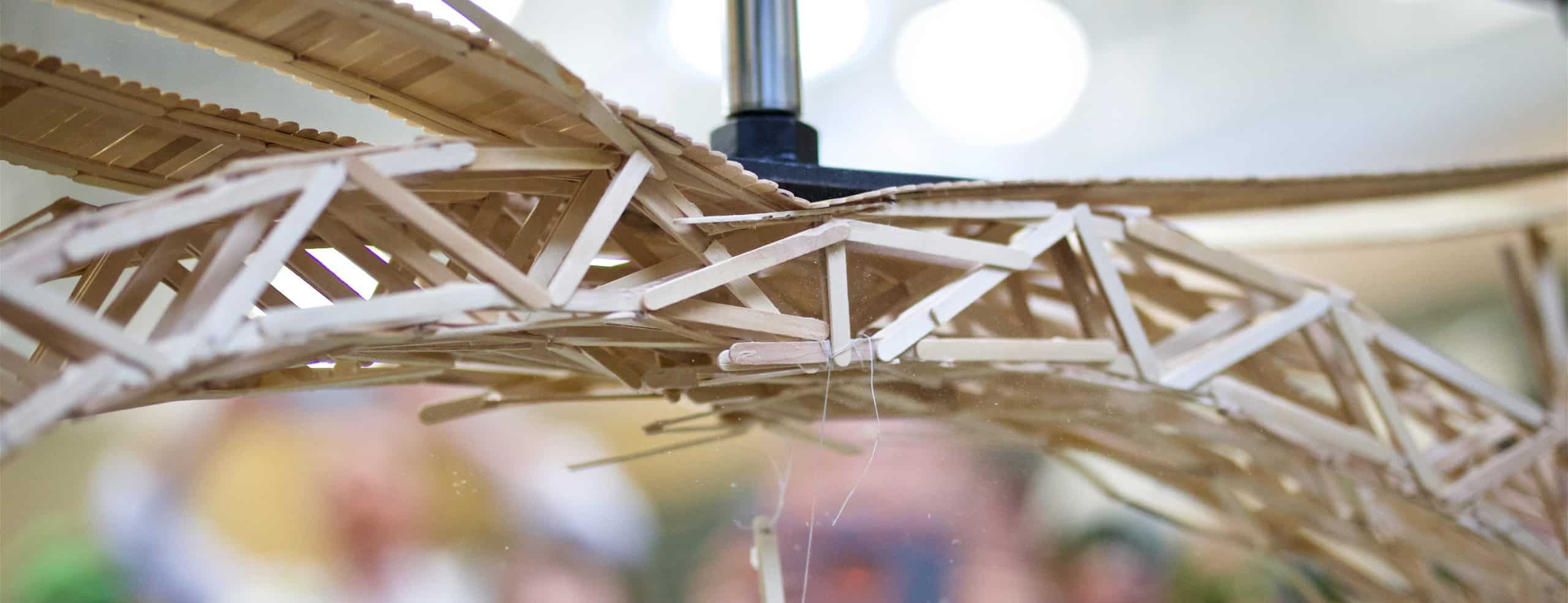
ENGINEERING PRINCIPLES 2 (ENGR 1000) | UVU CONCURRENT ENROLLMENT - Spring SEMESTER (Taken WITH ENG. PRINCIPLES 1)
- SUGGESTED GRADES: 11-12
- .5 Credit HS. (A86382C)
- 3 Credits CE
- PreReq: Engineering Principles 1
The second in a sequence of “hands-on” courses that tie observations and concepts common to a variety of different engineering disciplines in order to develop a better understanding of basic math and science principles used in engineering. Students will design, build, and test solutions for design problems in each field. These include:
- Mechanical Engineering: Trebuchets, catapults, and ballistas (Angry Birds in Real Life).
- Civil Engineering: Building water towers and busting bridge trusses.
- Chemical Engineering: Mass producing the perfect pancakes.
- Computer Engineering: Create your own video game.
- Electrical Engineering: Wiring a Useless Box.
- Material Science: Bullet-proof material.
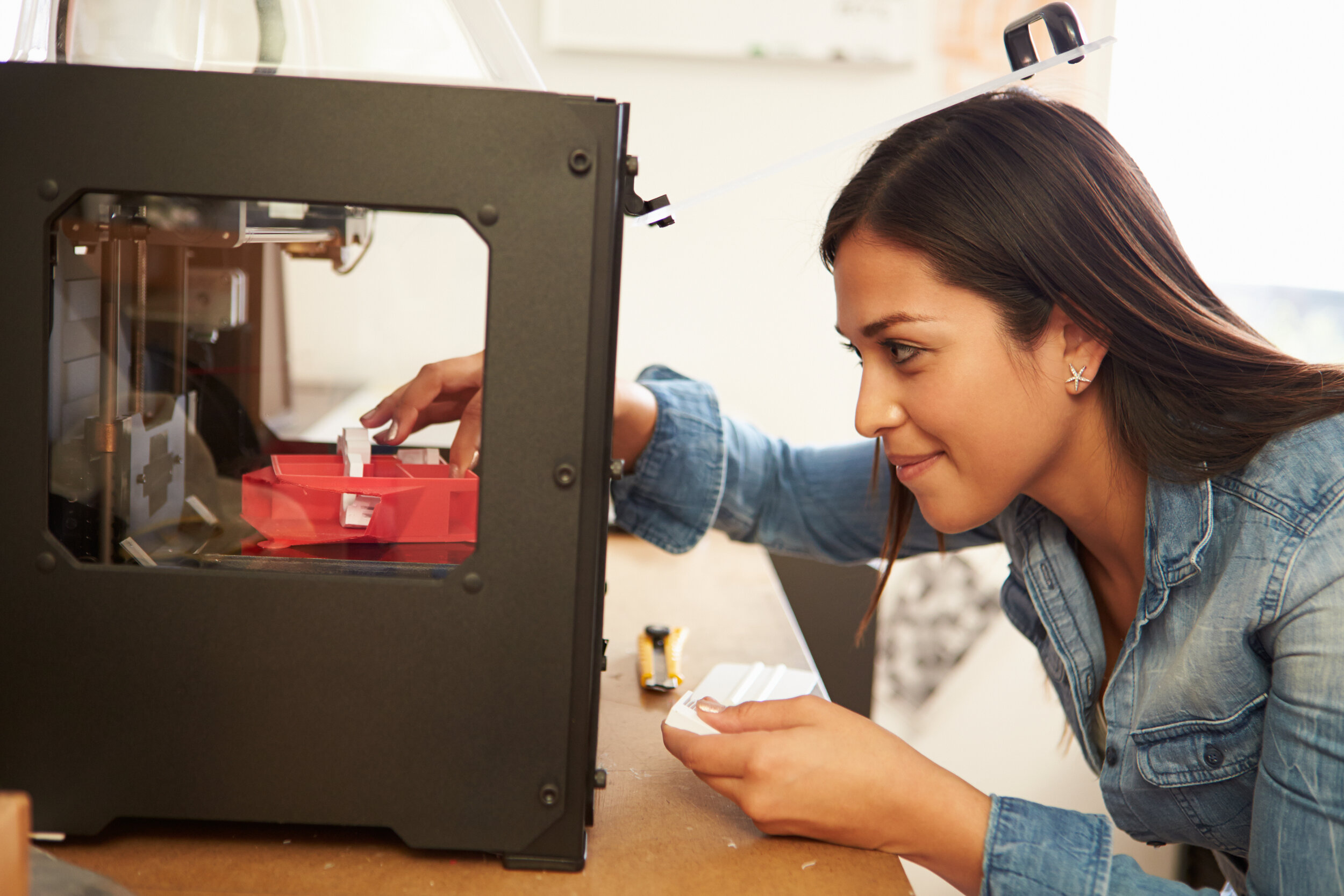
Product design & Development - MANUFACTURING PRINCIPLES 1 | HIGH SCHOOL COURSE - SEMESTER
- SUGGESTED GRADES: 10-12
- .5 Credit HS (A86202)
This program will utilize industry-standard tools, manufacturing equipment, and procedures for automated manufacturing. A hands-on approach is the focus to specialize students in manufacturing equipment maintenance, operation, and the design process for new products being built. Introduction to product design - Students will be introduced to basic manufacturing systems and principles such as:
- 3D Printing
- Resin Printing
- Silicone Molding
- Laser Engraving
- Milling
- Adobe Illustrator
- Basic Manufacturing Business Models
product design & Development - MANUFACTURING PRINCIPLES 2 (TECH 1050)| UVU CONCURRENT ENROLLMENT - SEMESTER
- SUGGESTED GRADES: 10-12
- .5 Credit HS (A80262C)
- 3 Credits CE
- PreReq: Product Design Manufacturing Principles 1
This second course will build upon skills and content from Product Design & Development - Manufacturing Principles 1. A hands-on approach is the focus to specialize students in manufacturing equipment maintenance, operation, and the design process for new products being built. Product Development - Students will utilize and learn about the manufacturing process by:
- Designing and Developing useful Products
- Visiting nearby Factories
ROBOTICS 1 | HIGH SCHOOL COURSE - SEMESTER
- SUGGESTED GRADES: 11-12
- .5 Credit HS (A86402)
- PreReq: 1 of the following courses: Intro to Engineering, Product Design Manufacturing, Electronics
This course prepares individuals with a lab-based, hands-on curriculum combining electrical, mechanical, and engineering principles. Students will learn to design, build, program, and control robotic devices. Introduction to Robotics - Vex Robotics will be used for students to learn how to:
- Design, build, program, and control robotic devices
- Student electronic systems
- Utilize engineering concepts such as design, testings, and documentation

ROBOTICS 2 | HIGH SCHOOL COURSE - SEMESTER
- SUGGESTED GRADES: 11-12
- .5 Credit HS (A80282)
- PreReq: 1 of the following courses: Intro to Engineering, Product Design Manufacturing, Electronics
This second course prepares individuals with a lab-based, hands-on curriculum combining electrical, mechanical, and engineering principles. Students will learn to design, build, program, and control robotic devices. Robotic Systems - Students will dive into the field of robotics further, learning about fields such as:
- Hydraulics
- Pneumatics
- Animatronics
- Robotics Programming Languages and MORE!
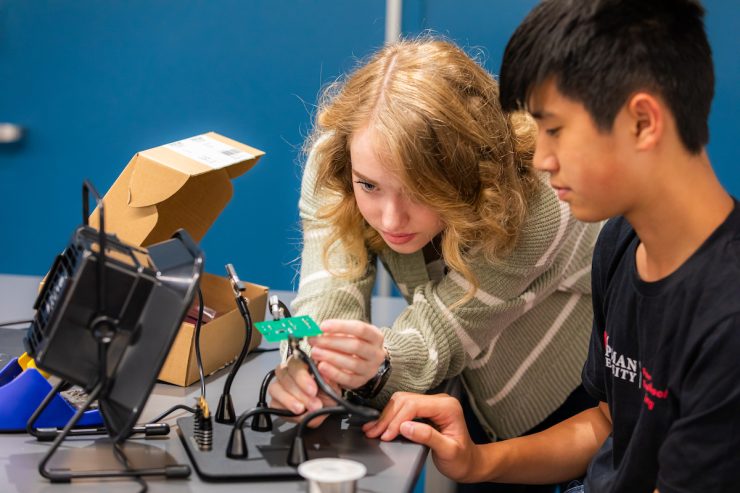
Electronics 1 (AET 1130) | uvu concurrent enrollment - SEMESTER
- SUGGESTED GRADES: 10-12
- .5 Credit HS (A87882C)
- 3 Credits CE
The first in a sequence of courses that prepares individuals with a lab-based, hands-on curriculum combining electrical, mechanical and engineering principles. Students will learn to design, build, program, and control robotic devices. Introduction to electronic systems - Instruction includes training in:
- Safety
- Electrical Theory
- Parallel and Series Circuits
- Schematic Components
- Soldering
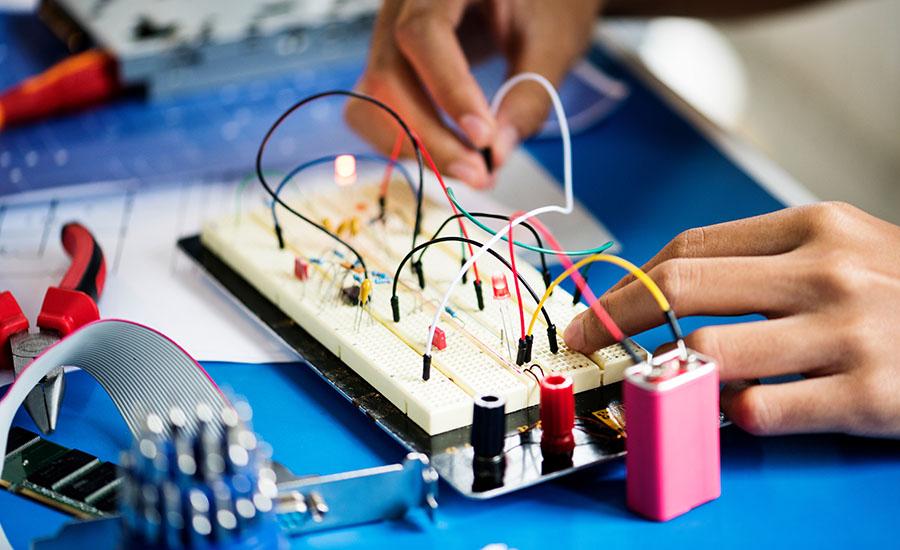
Electronics 2 (AET 1150) | uvu concurrent enrollment - SEMESTER
- SUGGESTED GRADES: 10-12
- .5 Credit HS (A88292C)
- 3 Credits CE
- PreReq: Electronics 1
The second in a sequence of courses that prepares individuals with a lab-based, hands-on curriculum combining electrical, mechanical and engineering principles. Students will learn to design, build, program, and control robotic devices. Development of electronic systems - Instruction includes:
- Schematic Drawing
- Circuit Design
- AC and DC Circuits
- Digital Integrated Circuits
- Microprocessor Based Systems



